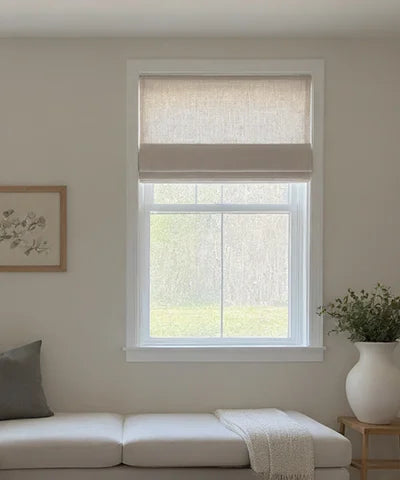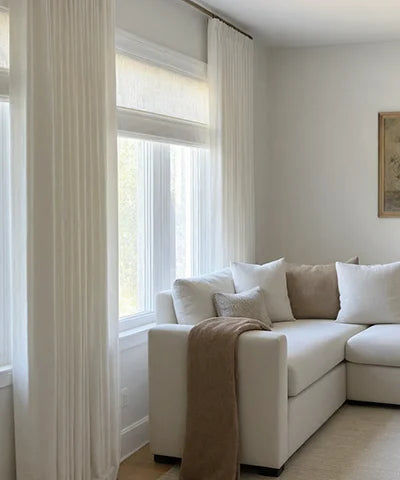Shade Measuring Instruction
Welcome to our guide for measuring your new shades! With our straight forward instructions and the help of Measurement Finder, you’ll effortlessly gather precise dimensions for the perfect fit.
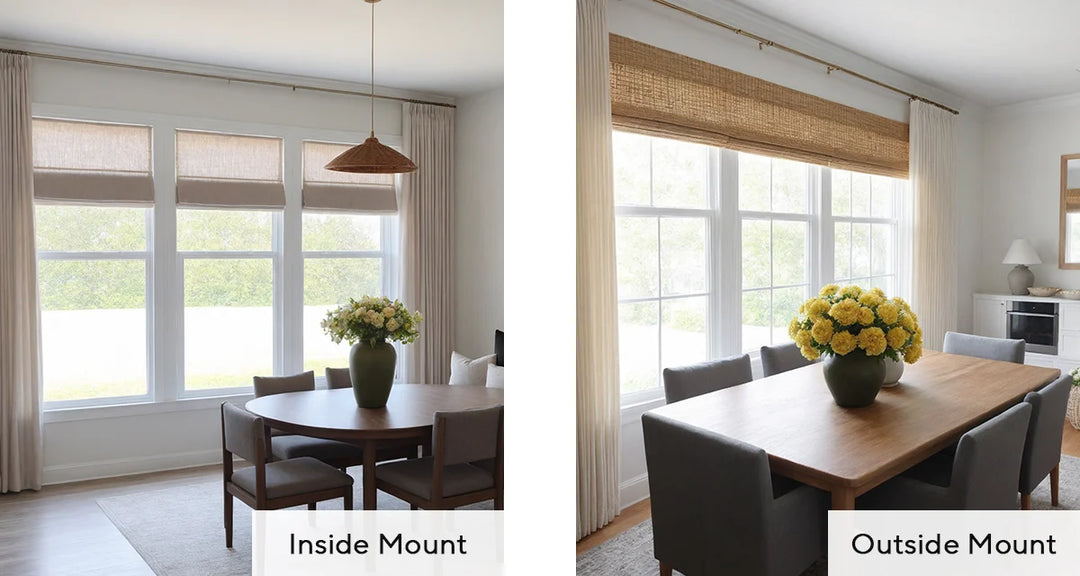
Inside Mount vs. Outside Mount: Which Should You Choose?
Before measuring your windows for blinds or shades, it’s essential to determine the best mounting style for your needs. Both inside and outside mounts have unique advantages and work well in different scenarios.
Inside Mount Your Window Treatments When:
- Enough window depth for inside mount.
- To get a sleek and minimalist aesthetic for your space.
- The window trim is visually appealing and should be highlighted rather than concealed.
- You prefer window treatments that blend seamlessly with the wall without protruding.
- The windows have sturdy frames capable of supporting the mounting hardware.
- The house is relatively new, with well-shaped rectangular windows.
- The window sill extends outward, complicating the use of an outside mount.
Outside Mount Your Window Treatments When:
- The window depth is not enough, also is irregularly shaped, unsuitable for an inside mount.
- The objective is to cover unattractive window trim and refresh the window’s appearance.
- Maximum light-blocking capability is required when the shades are drawn.
- The window frame is too fragile or shallow to support an inside mount.
- Privacy is a primary concern, and the shades need to block external view when closed.
- The goal is to create the impression of taller, larger windows.
- When rolled up, the window treatment should be as unobtrusive as possible.
Measure the Window for Inside Mount
① Measure the Depth
Measure the depth at the top of the inside window casing to ensure adequate space for a secure inside mount. This measurement will also determine if a flush mount, where the product sits within the window frame without protruding, is possible. A minimum depth of different shades varies, kindly check the format below for the information of depth requirements for different shades, which is necessary for an inside mount.
② Measure the Width
For Shades: Due to potential irregularities in window shapes, it is recommended to measure the window at three places: across the top, middle, and bottom. Round each measurement down to the nearest 1/8 inch.
③ Measure the Length
To determine the length, also measure the window in three locations: across the left, center, and right. Round each measurement up to the nearest 1/8 inch. Use the largest of these measurements as your ordering length.
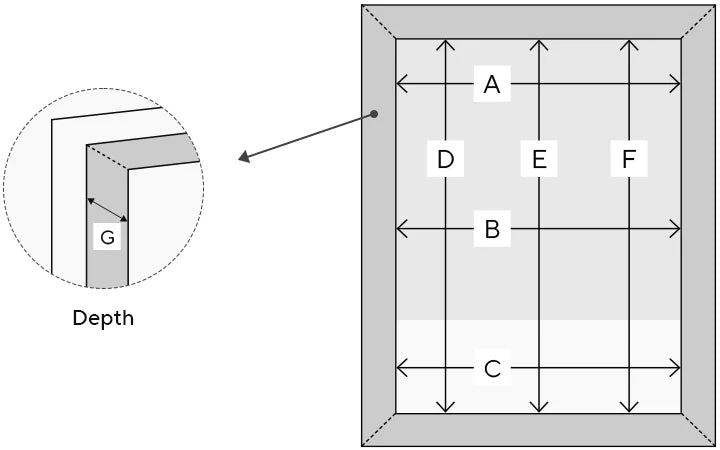
Note on Deduction
To ensure the shade fits correctly, take the smallest of these measurements and consider deduction requirements to get the final width measurement.
- For Roman Shades and Bamboo Shades, headrail width = ordered width (after deduction 3/8 inch from window frame)
- For Roller Shades and Zebra Shades, headrail width = ordered width (after deduction 3/8 inch from window frame)
- For Cellular Shades and Venetian Shades, headrail width = ordered width (after deduction 1/4 inch from window frame)
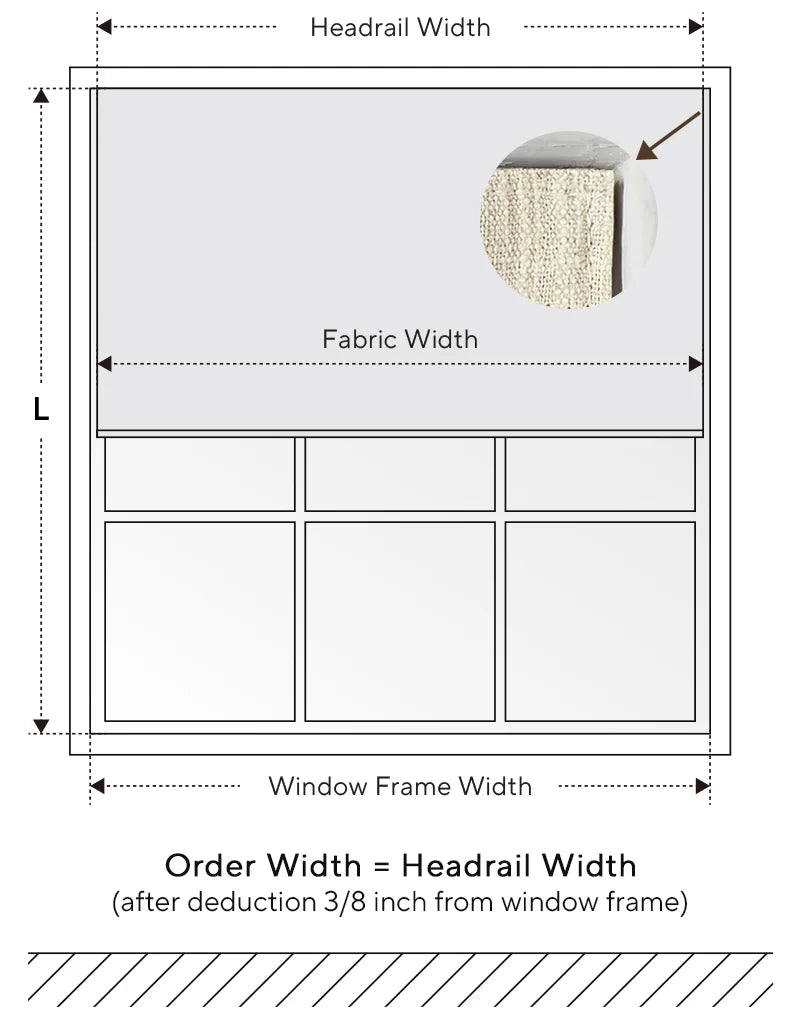
Roman Shades / Bamboo Shades
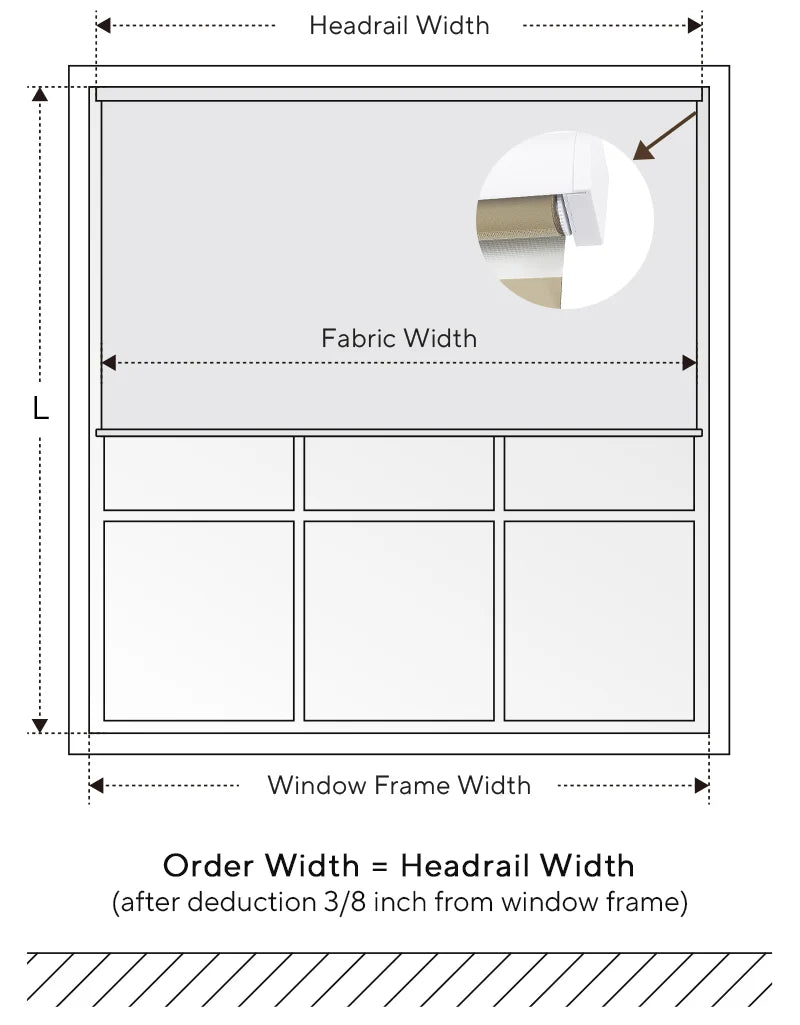
Roller Shades / Zebra Shades
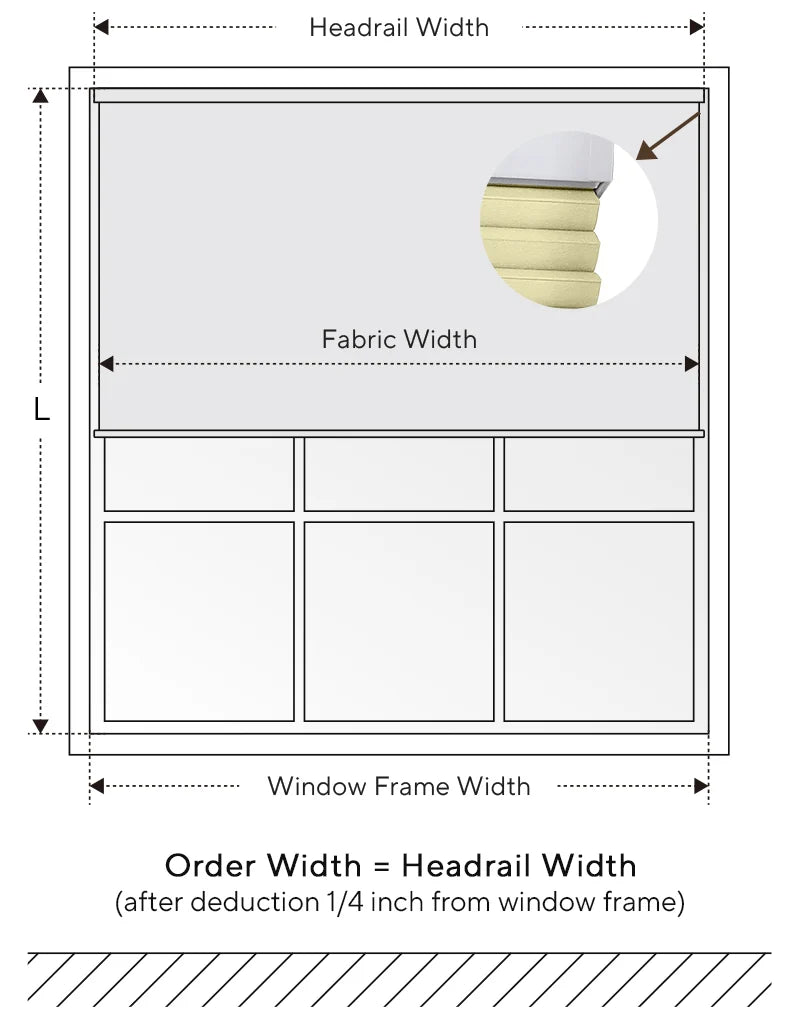
Cellular Shades / Venetian Shades
Note on Side Gaps
Slight gaps on both sides of shades exist because the shade material is slightly narrower than the headrail. This design allows the shade to roll up and down smoothly without obstruction.
- For Roman Shades and Bamboo Shades, Fabric Width = Ordered Width
- For Roller Shades and Zebra Shades, Fabric Width = Ordered Width - 1 1/2 inches
- For Cellular Shades and Venetian Shades, Fabric Width = Ordered Width - 1/4 inch
-
Shade Type
Roman Shades
Bamboo Shades
Roller Shades
Zebra Shades
Cellular Shades
Venetian Blinds
-
- Depth Requirement
- 2 1/2
- 2 3/4
- 2 1/2
- 3
- 2 1/2
- 3
-
- Window Frame Width
- 27 3/8
-
- Deduction Requirement
- 3/8
- 3/8
- 1/4
-
- Ordered Width
- 27
- 27
- 27 1/8
-
- Fabric Width
- 27
- 25 1/2
- 26 7/8
Tips for Inside Mount
- Confirm if your window has enough depth for an inside mount. If not, no worries! You can switch to an outside mount or explore other suitable products.
- Examine the window frame or casing to make sure it’s strong enough to drill into directly.
Measure the Window for Outside Mount
① Check the Space
Measure the height of the area above the window where the headrail of the shade will be mounted. Confirm that the space is sufficient to guarantee a secure and proper installation of the brackets and headrail.
② Measure the Width
Measure the width of the window(Frame outer edge to edge). If space permits, it is recommended to add 2-4 inches (1-2 inches on each side) to this measurement to reduce light seepage. This adjusted measurement will be your ordering width, representing the overall width of the shade.
③ Measure the Length
Measure the height of the window(Frame outer edge to edge). If space permits, it is recommended to mount the shade at least 10-12 inches above the window frame to account for its stack height when fully rolled up and to maximize the window's exposure.
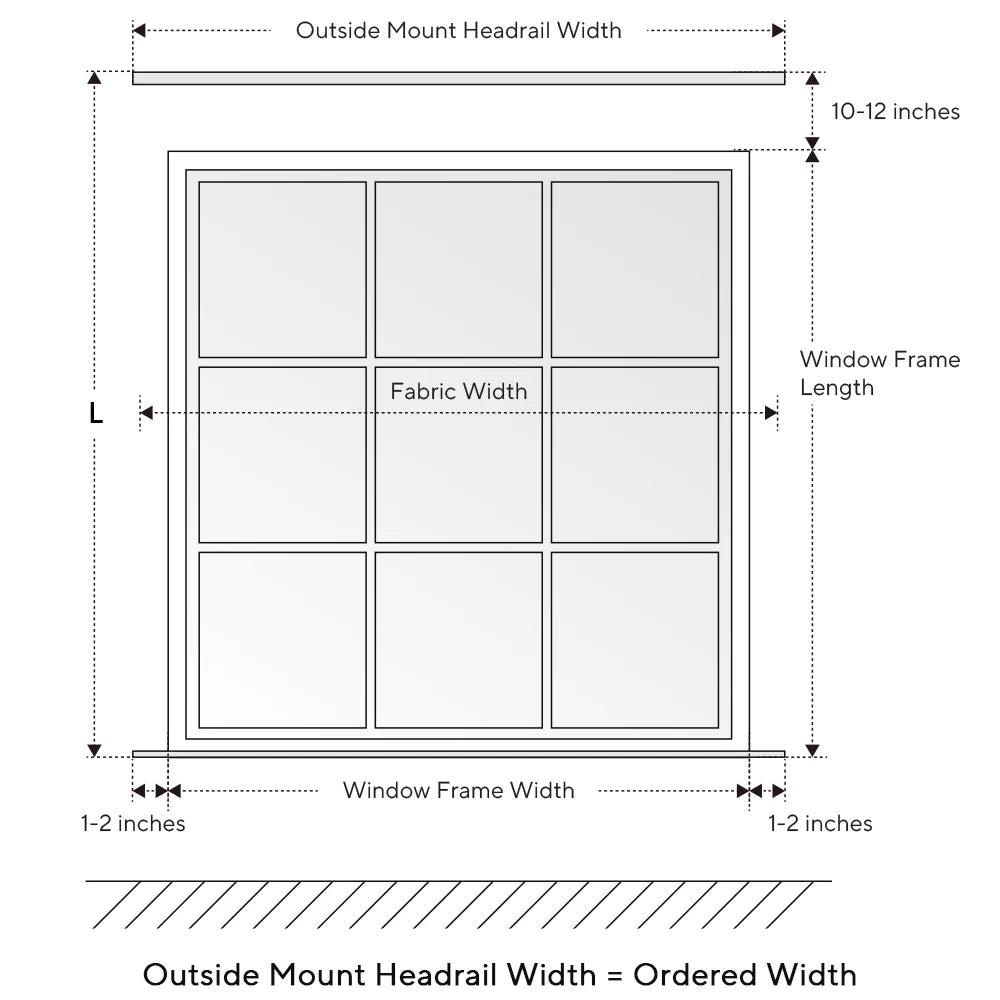
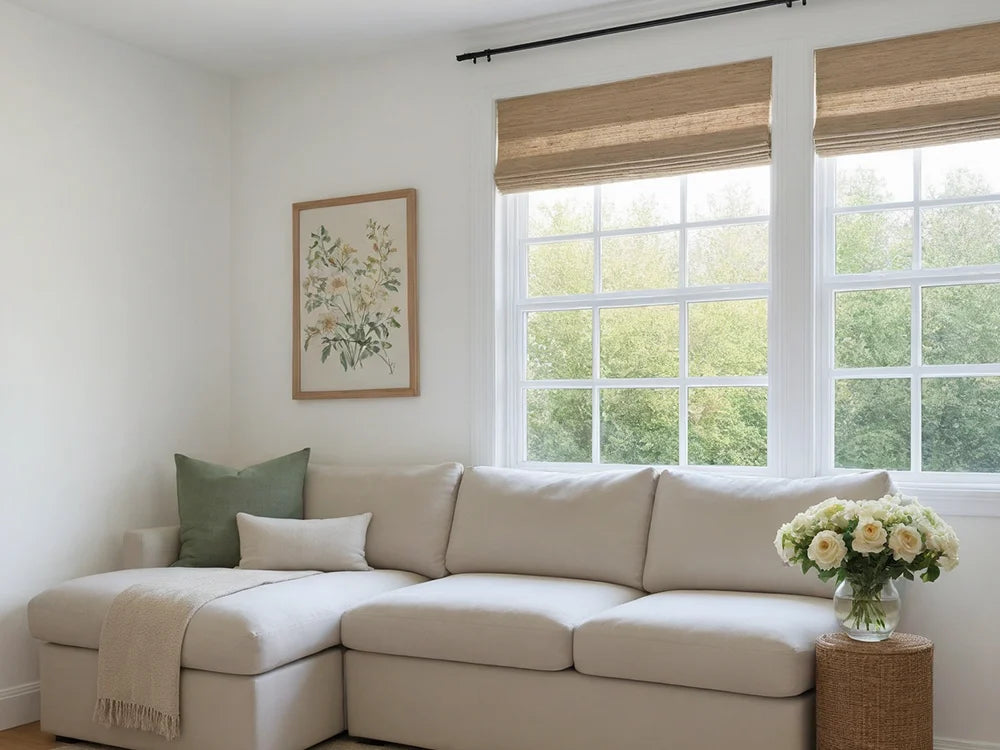
Tips for Outside Mount
Allow Extra Space: When measuring for outside mount shades, account for the headrail and mounting brackets. To ensure optimal light control and privacy, add enough extra width to completely cover the trim. If there is no trim, add a minimum of two inches on each side for a total of four extra inches.
Create the Illusion of a Larger Window: Extending the blinds outside the window not only provides space for the mounts but also makes the window appear larger than it is, adding a sense of grandeur to your space.
Check Mounting Space: Outside mounts require a flat surface of at least 2 inches above the window or frame to accommodate the mounting brackets. Ensure you have enough space available before proceeding with an outside mount.
Consider Projection Brackets: If your window has frame molding that might obstruct the blinds, projection brackets can help by extending the blinds further away from the window frame, allowing clearance for the molding.
